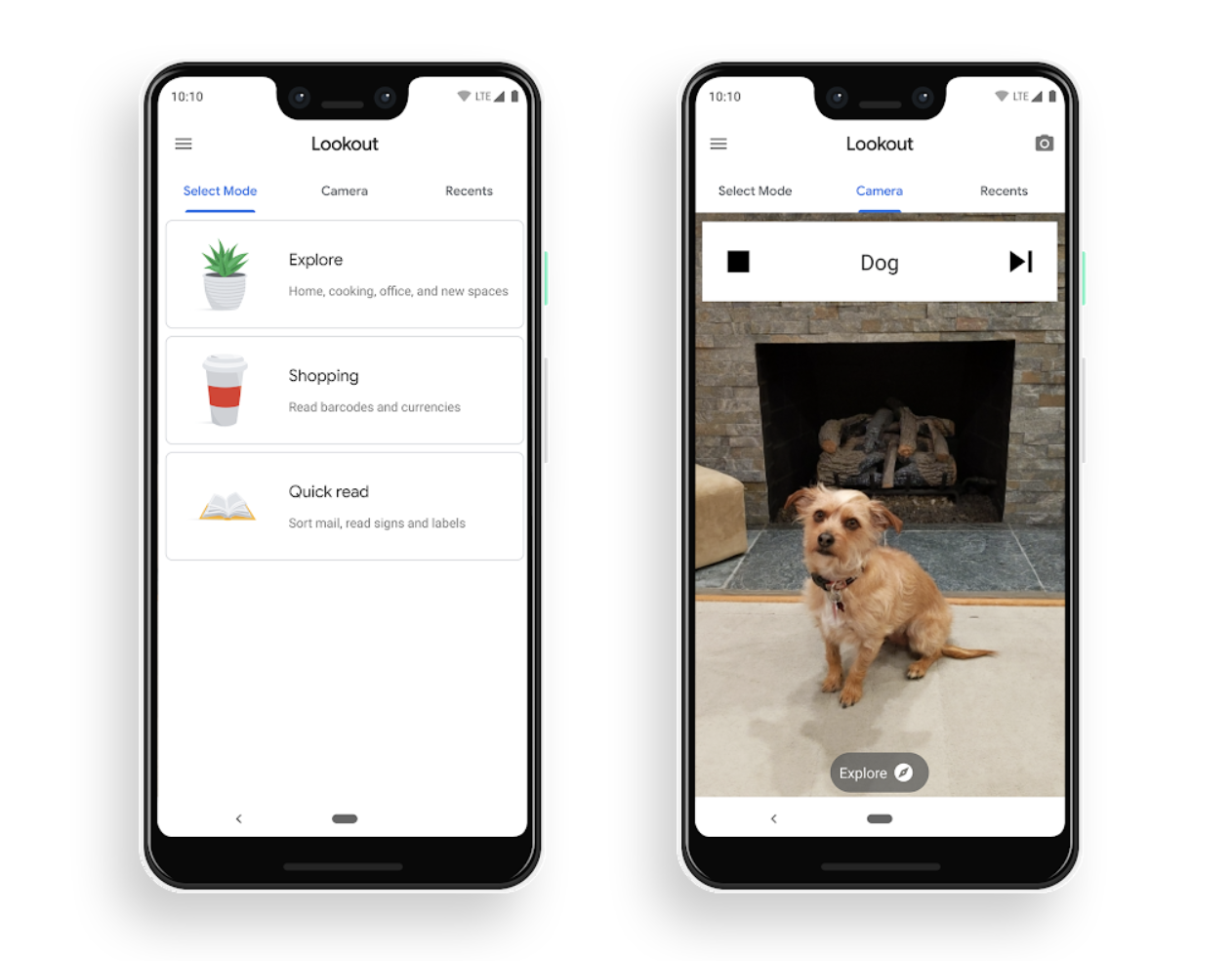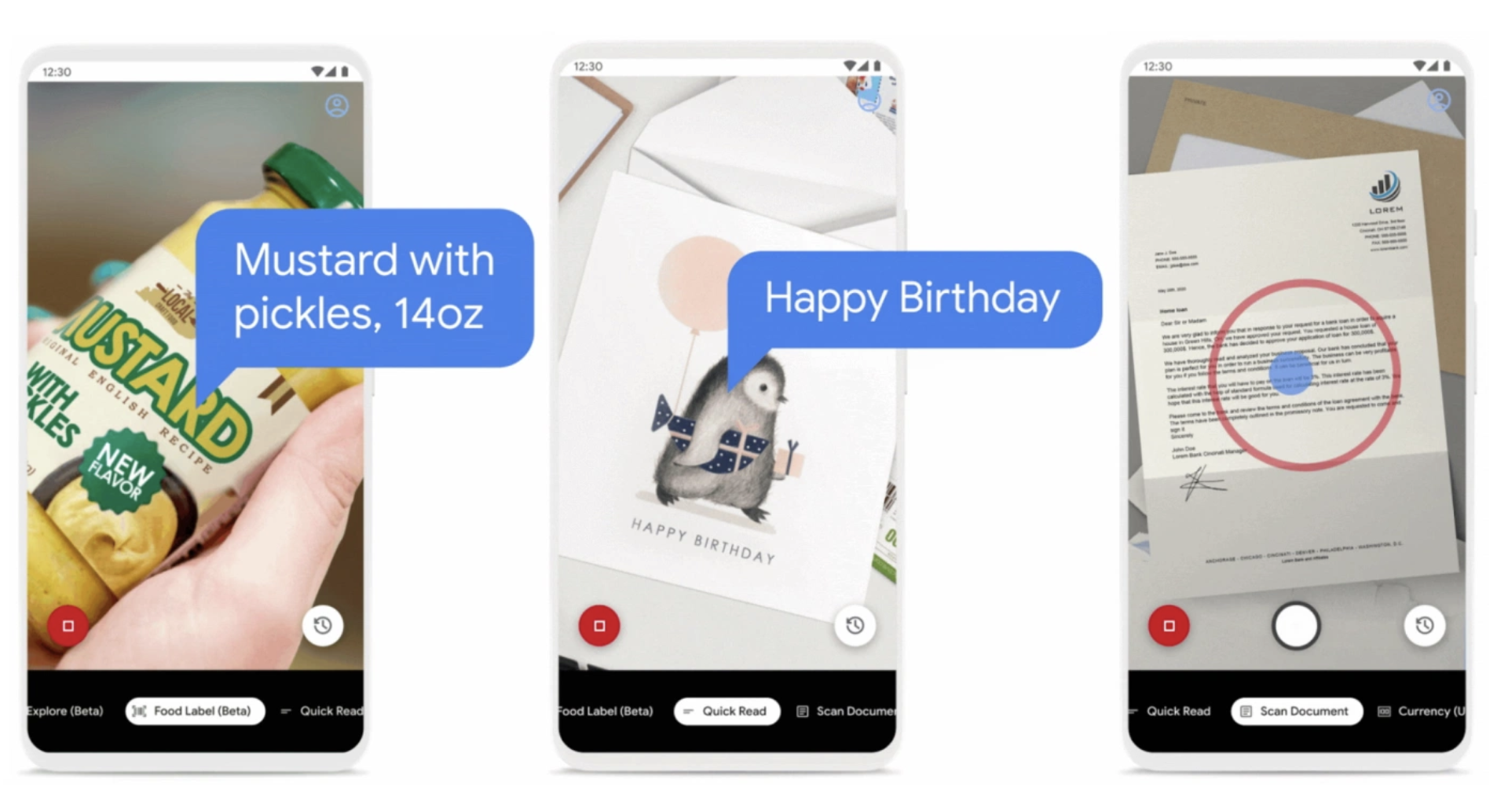Subscribe now and get the latest podcast releases delivered straight to your inbox.
Google’s Lookout app now capable of scanning long documents and food labels

Aug 14, 2020

Google just launched an update to its Lookout app, which operates as an AI toolkit for people with vision impairment. This update will expand the app to offer support in reading long documents and food labels, as well as improved compatibility with the Android screen reader TalkBack.
What is Google Lookout?
According to Google, the “goal [of Lookout] is to use AI to provide more independence to the nearly 253 million people in the world who are blind or visually impaired."
The app, which launched for the Google Pixel devices in early 2019, was created to help those who have vision impairments or are blind identify information about their surroundings through their phone camera.
It was designed to create more independence for the user in situations where they may typically need help, like learning new surroundings for the first time, reading text, and everyday tasks like cleaning, cooking, or shopping.
By hanging your phone from a lanyard around your neck, or simply sticking it in your shirt pocket, Lookout can tell you about the space you’re in, in real time.
And though this seemed like a huge advance for the vision impaired community at large, Lookout was only available to Pixel devices in the U.S. (and in English only).
Furthermore, in Google’s own words, the company acknowledge that, “as with any new technology, Lookout will not always be 100 percent perfect” In turn, Google asked their users to submit feedback both good and bad to help improve the Lookout experience.

So, what’s new with Google Lookout?
With this latest update you will now be able to use Lookout on all Android devices (not just the Pixel) with more than 2GB of RAM running on Android 6.0 and later, as well as in the newly-added languages of French, Italian, German, and Spanish.
However, the main features of this update are Lookout’s two brand new modes: Food Label and Scan Document.
Food Label
Food Label works to identify packaged foods with your phone’s camera. The app will aid you in positioning the product to be properly identified. Food labels, which are often flashy, vibrant, are not generally geared toward optimal legibility (even for users with perfect vision).
Lookout works to not simply read the label, but also to compare it to a database of product images and look for matches of relevant information such as brand, product, and flavor.
If this fails, the app can help you scan the barcode as a backup. This feature will help the user in daily tasks such as shopping, organizing, or preparing food in their home.
Scan Document
Scan Document is not the most flashy of features, but it certainly is practical. This feature will help the user aim their phone at a document, get the whole thing in view, and then scan it for their screen reader to read aloud.
This is helpful in everyday life in terms of receiving and processing physical mail, signage, or even greeting cards.

Scott Adams, product manager of Google Accessibility Engineering said, “Expanding this app to more people and devices is part of our commitment to make the world's information universally accessible and to build helpful products with and for people with disabilities.”
Google has also taken note of user feedback and improved compatibility with the Android screen reader, TalkBack.
Why is this important?
Google is making strides in accessibility, not only in the app space but on the web as well with their mission that “Everyone should be able to access and enjoy the web.”
This is a clear indicator of the direction many of us should be taking with accessibility on our websites, content, and however we contribute to the digital world.
Accessibility continues to be brought to the forefront lately, and those who ignore it or put it off for later will soon be left behind or worse, potentially face fines and legal action for non compliance.
According to the US Census Bureau 56.7 million Americans have some type of disability. That’s nearly 20% of the population. It is our duty as designs, developers, creatives, content creators, etc. to craft things that not only appease the majority of users.
It’s our responsibility to be inclusive.
As a designer at IMPACT, we talk about user experience quite a lot. To me, user experience does not mean “user experience for everyone except if you have a disability.”
User experience should take all types of users into consideration.
Free: Assessment